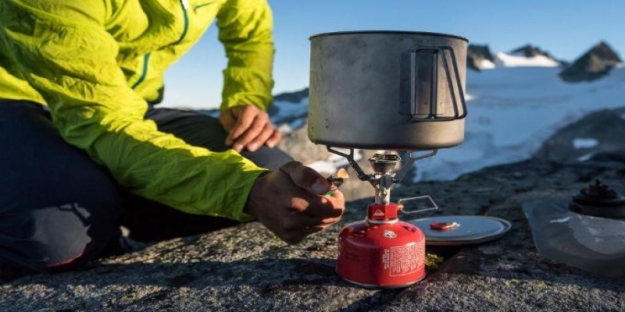Backpacking Packing Checklist: Essentials for Any Adventure
Packing for a backpacking trip can feel overwhelming. Bring too much and your bag becomes heavy. Forget key items and you’ll waste money buying replacements. This checklist helps you strike the right balance: lightweight, practical, and ready for anything.
Choosing The Right Backpack
The backpack is your foundation, so getting this choice right matters. Size and fit should match your body and trip length.
- Osprey Atmos AG 65: Excellent suspension and airflow, ideal for multi-week treks.
- Deuter Aircontact Lite 50+10: Expandable storage with durable build quality.
- REI Co-op Flash 55: Lightweight design for those who pack on the minimalist side.
Check for padded hip belts, adjustable torso length, and external pockets for easy access. Try the bag loaded in-store before buying if possible—comfort under weight makes a big difference.
Clothing Essentials
Clothing should cover a range of conditions without taking up too much space. Choose quick-dry fabrics that can be washed in a sink and reused often.
- Base layers: 2–3 breathable shirts, 2 pairs of trekking pants or shorts.
- Insulating layer: A down jacket or synthetic fleece for cooler evenings.
- Rain gear: Lightweight waterproof jacket—Patagonia Torrentshell and Marmot PreCip are dependable options.
- Underwear & socks: 4–5 pairs of fast-drying underwear and 3–4 pairs of merino socks (Smartwool and Darn Tough work well).
- Shoes: Comfortable hiking boots plus sandals or slip-ons for downtime.
- Extras: Hat, scarf, or gloves depending on climate.
Tip: Stick to neutral colors so pieces mix and match easily, reducing how much you need to pack.
Sleeping Gear
Quality sleep is essential on long trips, especially when camping or staying in budget hostels.
- Sleeping bag: Match the temperature rating to your destination. The Nemo Disco 15 suits colder regions, while the Sea to Summit Spark Ultralight is perfect for warmer climates.
- Sleeping pad: A Therm-a-Rest NeoAir Xlite provides comfort without much weight.
- Travel pillow: Inflatable or compressible, depending on space.
If you’ll be in hostels, consider a lightweight sleep sack for hygiene and comfort.
Cooking & Food Supplies

Bringing cooking gear makes sense for hikers or travelers spending time in remote places.
- Stove: Compact burners, such as the MSR PocketRocket 2 or Jetboil Flash, boil water quickly.
- Cookware: A single pot, a spork, and an insulated cup usually cover most needs.
- Water filter: Sawyer Squeeze or Katadyn BeFree for safe hydration.
- Food: Lightweight options include instant noodles, rice packets, oatmeal, and dehydrated meals from brands like Mountain House or Backpacker’s Pantry.
Pack snacks like trail mix and protein bars for long travel days.
Toiletries & Personal Care
Keep items compact, focusing on what you’ll need daily.
- Biodegradable soap such as Dr. Bronner’s.
- Toothbrush, toothpaste, and floss.
- Microfiber towel that dries quickly.
- Sunscreen (reef-safe if traveling to coastal areas).
- Insect repellent.
- Wet wipes and small bottle of hand sanitizer.
- First aid kit with blister plasters, bandages, pain relievers, and personal medications.
A small grooming kit—nail clippers, razor, and a comb—keeps you presentable on the road.
Tech & Gadgets
Modern backpackers rely on a few key devices to stay connected and safe.
- Power bank: 10,000–20,000 mAh for charging phones and cameras.
- Universal travel adapter: Brands like Anker and EPICKA make reliable models with multiple USB ports.
- Headlamp: Petzl and Black Diamond produce lightweight, long-lasting options.
- Phone with offline maps: Apps like Maps.me or Google Maps offline are essential.
- Camera or GoPro: Compact for capturing memories without weighing you down.
Earbuds or lightweight headphones are worth adding for long bus rides.
Documents & Money
Travel runs smoothly when you’re organized with documents and cash.
- Passport with protective cover, plus printed and digital copies.
- Travel insurance documents are accessible offline.
- Debit/credit card with no foreign transaction fees.
- Local currency for small purchases.
- Waterproof pouch or slim money belt to protect valuables.
Storing copies separately from originals reduces risk if something gets lost.
Packing Accessories
Smart accessories keep your gear organized and protected.
- Packing cubes: Eagle Creek or AmazonBasics sets streamline packing.
- Dry bags: Essential for electronics and spare clothes in rainy areas.
- Carabiners: Handy for attaching shoes, water bottles, or wet clothes outside your pack.
- Laundry kit: Small detergent sachets, sink plug, and travel clothesline.
Consider a lightweight foldable daypack for daily excursions without carrying your main bag.
Region-Specific Additions
Tailor your gear to where you’re headed.
- Tropical: Mosquito net, electrolyte tablets, long-sleeve shirts for sun and insect protection.
- Cold climates: Thermal underwear, heavy-duty gloves, and warmer sleeping bags.
- Urban travel: Compact lock for hostel lockers and RFID-protected wallet.
Adapting gear ensures you stay comfortable without unnecessary extras.
How To Pack Efficiently?
Backpack weight and balance make a big difference when you’re walking long distances.
- Roll clothes instead of folding to save space and reduce wrinkles.
- Place heavier items near your spine for balance.
- Keep daily essentials—snacks, jacket, documents—accessible near the top or in side pockets.
A well-organized backpack saves time and reduces stress when moving between places.
Cost Guide

Building a backpacking kit is an investment, but costs vary based on brand choices.
- Backpack: $150–$300.
- Clothing: $200–$400.
- Sleeping gear: $200–$400.
- Cooking setup: $100–$200.
- Gadgets & accessories: $100–$300.
Budget stores like Decathlon keep costs lower, while premium brands like Arc’teryx or Hyperlite offer ultralight, long-lasting gear.
Best Time To Shop For Gear
Timing purchases saves money.
- Spring and fall sales at REI, Backcountry, and Moosejaw often reduce prices by up to 40%.
- Amazon Prime Day and Black Friday are perfect for electronics and accessories.
- Outlet and used gear programs such as Patagonia Worn Wear and REI Garage offer discounts on quality items.
Watching sales can cut hundreds off your total setup.
Final Checklist Before You Go
- Backpack adjusted to your size
- Passport and insurance documents packed
- 3–4 days of clothing ready
- Sleeping bag and pad chosen for the climate
- Cooking gear packed if needed
- First aid kit stocked
- The power bank and headlamp are charged
- Confirmed bookings and insurance in order
Conclusion: Be Ready, Not Overloaded
Backpacking isn’t about carrying everything—it’s about carrying the right things. With this checklist, you’ll have the gear you need for safety, comfort, and convenience without overpacking. Compare brands, look for sales, and build your kit step by step.
If you’re ready to buy, check trusted retailers like REI, Backcountry, Amazon, and Moosejaw for the best prices and seasonal deals.
Was this helpful? Share your thoughts
- Learned practical methods
- Solved my questions
- Inspired new ideas
-
![Affordable Family Vacation Packages That Kids Will Love]() Affordable Family Vacation Packages That Kids Will Love
Affordable Family Vacation Packages That Kids Will Love -
You do not need to empty your savings account to plan the ideal family vacation. The smart families understand that the right family vacation packages can either be a nightmare journey or a fairy tale. A lot of people have indicated that one of the biggest issues they have is the cost of travelling, and affordable options have become more important than ever.
Explore More





